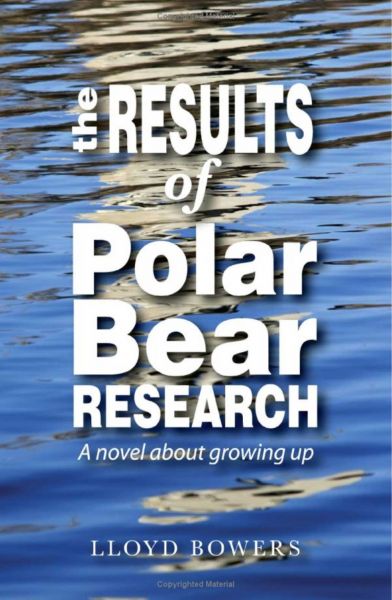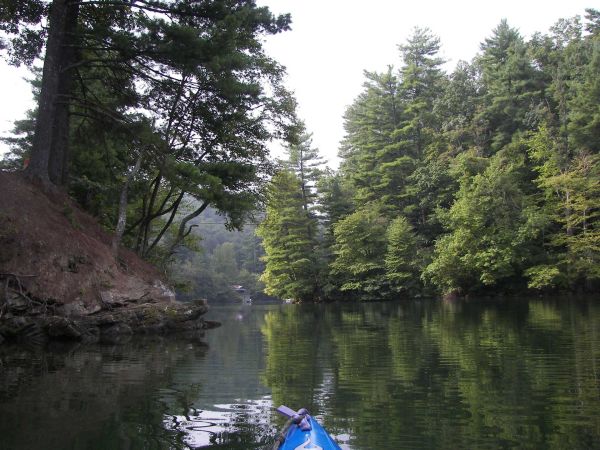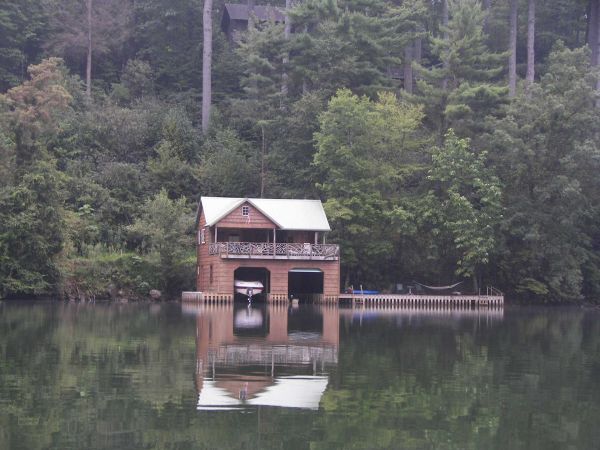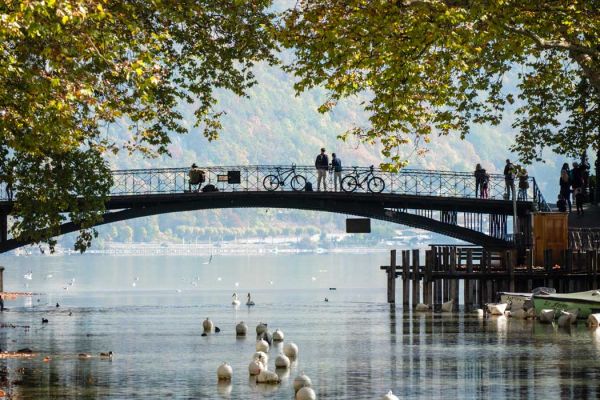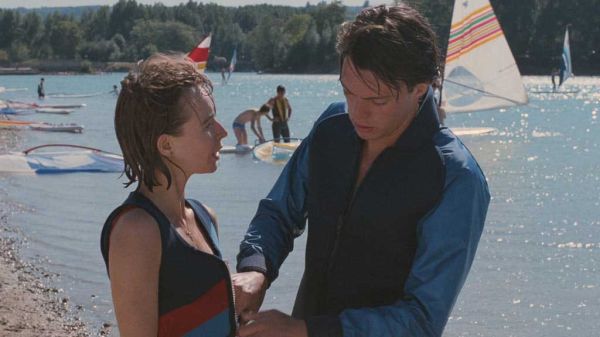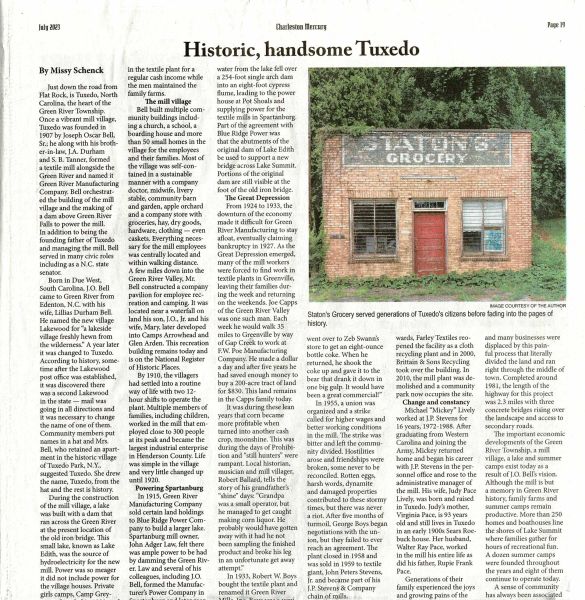Lake Summit

I can no longer remember when I visited Lake Summit for the first time, probably at the end of my high school years. My family went through Tuxedo, North Carolina, every Summer on our way to Flat Rock, just a few miles farther north on Highway 17. As the car climbed up the steep, widing highway, I could feel the transition to a lower-humidity, mountain climate. From the highway, we could see the expanse of the lake. I remember the clear, cold, bracing water of the lake, and the tall, majestic White Pines and Tulip Poplars that grew around it.
It's just one of the prettiest places I had ever seen. I liked it so much, I used it as the setting for my novel, The Results of Polar Bear Research, that I published in 2007. The novel concerns a group of college kids who spend the last weeks of summer vacation there before starting college again in September.
In Polar Bear Research, I tried to convey the image of Lake Summit as a living thing, of "water that had been in motion through the night, fed into the lake from a half-dozen streams and flowing across the slender, curving basin from Tuxedo to the Saluda Grade before exiting the lake below the dam and becoming part of the Green River."
Much of the action takes place at Mel's boathouse. Mel is a handsome, active boy who possesses no vision about his life. Girls find him attractive, but he eventually chases them away, almost against his will. People often spend the night at his boathouse, since he hates being alone.
Early one morning, two boys leave the boathouse and "followed the frontage road to the highway. White Pines and Tulip Poplars towered overhead and shaded the frontage road until amost noon. Across the lake, the local marina basked in sunlight already. Rain had been scarce in recent weeks, so that, when a succession of cars drove past, the dust roiled, coating the leaves of nearby trees and shrubs."
In Polar Bear Research, a relationship begins between Harriet, whom everyone calls "Harry," and John. She catches his eye and dives off the boat. "John ducked his head into the water to watch her swim to him. She had dived deeply and came up through the green, magical gloom with a relaxed competence, an ethereal figure caught in the shafts of sunlight, her eyes crinkling elatedly. . . . She drew in her limbs to push off again."
Lake Summit excited my imagination, but the idea of a novel came to me after I watched movies by a French film-director named Eric Rohmer. His films deal with relationships among young people during vacation-time, often set at lakes. Claire's Knee takes place at Lake Annecy, near the French border with Switzerland. Boyfriends and Girlfriends at the Val d'Oise, northwest of Paris.
Missy Schenck, writing in the July issue of the Charleston Mercury newspaper, chronicles the life of Tuxedo, from the opening of a textile mill there, that put Tuxedo on the map. The owners of the mill created the lake when they built a dam to harness the hydro-power that ran the mill. The mill-owners even built a few of the dozen or so summer camps that line the lake-shore. Missy Schenck titles the article "Historic, Handsome Tuxedo." But time has moved on, and Tuxedo has become a shell of its former self. There's not even a grocery store.
A recent article in our neighborhood newspaper, The Charleston Mercury, jogged memories from my

